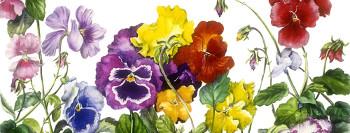Technique - How an Etching is Made
How an Etching is Made
A print is an original work of art printed on paper in a limited number of multiple impressions called an “edition”. Each image in an edition is an original and the final artwork is produced only when the plate is printed. The four best known printing techniques are woodcut, etching, lithography, and screenprint. Early botanical books utilized woodcuts, engravings and etchings to prepare inexpensive multiple images for wide dissemination.
1. The etching process begins by coating a metal plate with a waxy resist material.

2. The artist then transfers a preliminary rough sketch onto the prepared metal etching plate. The artist draws directly through the coating with a sharp tool to expose the plate. Another method is for the artist to draw freehand through the coating to create the image which is how I created most of my etchings.


3. The plate is then placed in an acid bath that etches the exposed lines into the surface of the metal.

4. After the plate is cleaned, the lines are filled with ink.


5. A piece of rag paper is placed over the plate and both are passed through an etching press.

6. The pressure of the press transfers the ink to the paper and the print is “pulled” from the plate.


7. When the ink is dry, each of the impressions is hand painted with watercolors.

8. The prints are numbered in the order they are pulled from the plate. The edition size is limited by the limited life of the etched plate which wears out during the printing process.

